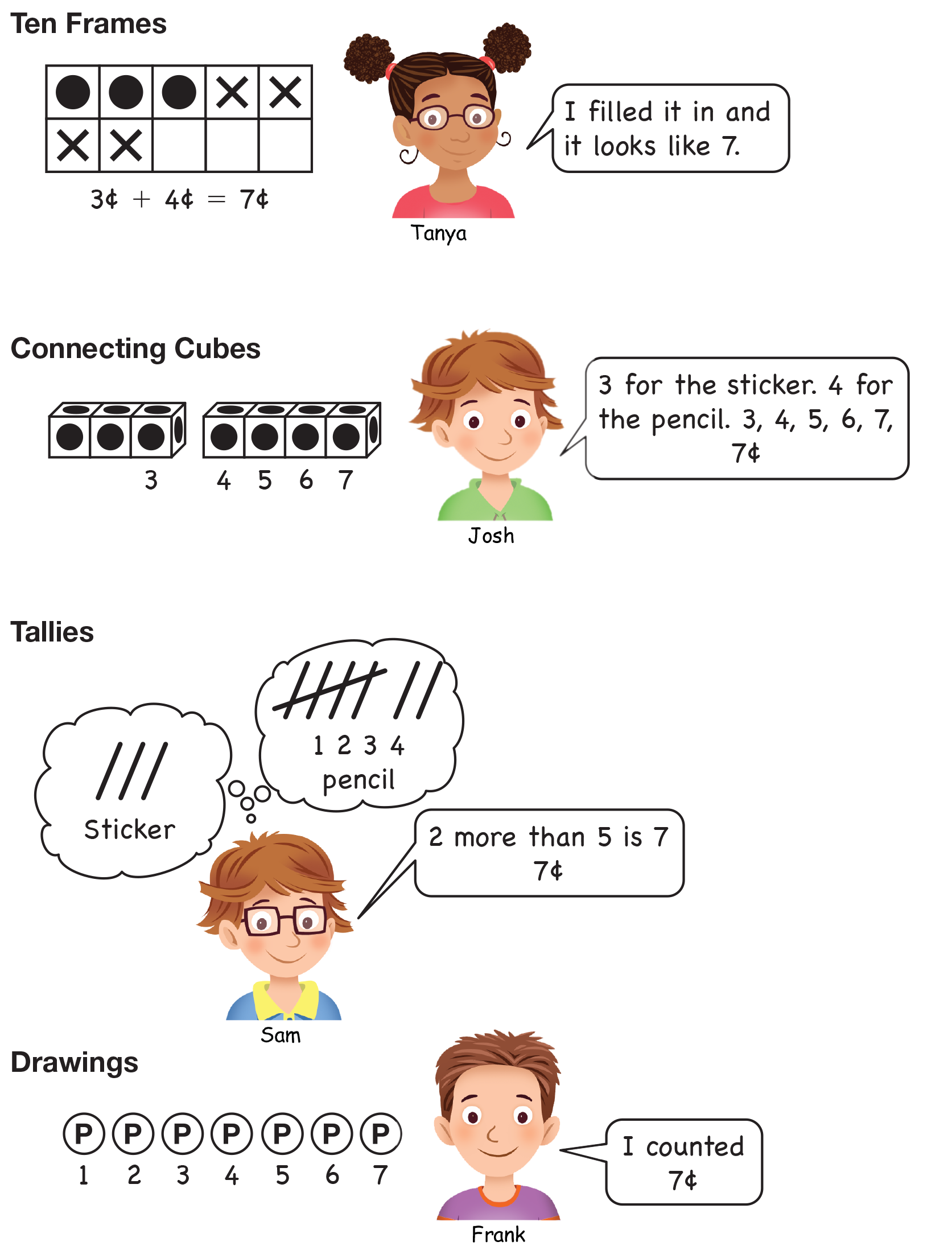Purchasing with Pennies
Est. Class Sessions: 2Developing the Lesson
Refer students to the display of the "store" items. See Materials Preparation. Distribute pennies, connecting cubes, and a copy of the Two Ten Frames Master. Display the Math Practices page from the Student Activity Book Reference section.
Pose a "join" problem similar to the following:
Ask students to solve this problem encouraging them to use the tools you have provided and used in this unit. After students have had a few minutes to solve the problem, refer to Math Practices 2 and 5, Find a strategy and Show my work, on the Math Practices page and ask students to show their partner how they solved Sam's problem. Circulate among the students listening for a variety of solutions to share with the class.
Ask:
While students are sharing their solution strategies, listen for students who are using a counting-all strategy rather than counting on. Encourage these students to start with a number in the problem and count on, if appropriate. Frank's solution in Figure 2 shows a student counting all. The other students in the Figure are either using benchmarks to find the sum or using a counting-on strategy. See the Sample Dialog.
Give students more problems to solve, perhaps trying different types of problems. See the Content Note. When appropriate, ask students to represent their solution with number sentences.
Here are some sample problems:
Students will solve similar problems throughout the year in the Daily Practice and Problems.


















